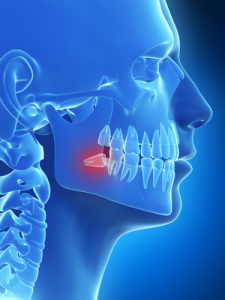- NYC UES Office
- 970 Park Avenue, Suite GFN,
New York, NY 10028
- Carnegie hill Office
- 1175 park avenue,
new york, ny 10128
Impacted Canines
What are Canine Teeth and Why are They Important?
Humans have four canine teeth: two upper (maxillary) canines and two lower (mandibular) canines. They are located laterally to each lateral incisor, directly beneath the eyes. Since they are located at the corners of the mouth, they are essential for maintaining the aesthetic appearance of a smile. They also play a pivotal role in the ‘biting’ mechanism of the teeth. They are the last teeth to fall into place, and therefore, help with correct alignment of other teeth in the dental arch by closing any gaps in the front teeth.
What is an Impacted Tooth?
Tooth impaction means that a tooth has failed to fully erupt and function after the expected time of eruption. On average, maxillary canine teeth are expected to fully erupt by age 13. However, canine teeth are the second most commonly impacted teeth, and maxillary canine impaction occurs in approximately 2% of the population. Some of the most common reasons for canine teeth impaction include improper alignment of front teeth and the presence of extra teeth that compete for available space. These two reasons prevent natural eruption of canine teeth.
How Do You Get Diagnosed for Impacted Teeth?
The most critical aspect in prevention of canine teeth impaction is early detection of tooth displacement during routine dental examinations.Diagnosis of canine teeth impaction is based on both clinical and radiographic evaluation. Most common radiographic tools used for evaluating canine teeth impaction are periapical films, occlusal films, and extraoral films, such as cephalograms and cone beam computed tomography (CBCT). Cone beam computed tomography provides a 3-D view of the impacted canine teeth. This information allows the oral surgeon to perform the surgical exposure accurately with minimal bleeding and discomfort.
What is the Treatment for Canine Teeth Impaction?
If the displacement of canine teeth is detected early, an attempt should be made to prevent their impaction. Treatment options include selective extraction of deciduous (primary) canines to normalize the position of the displaced permanent canines. The most desirable approach is surgical exposure followed by orthodontic treatment to allow impacted canines to erupt and help align them on the dental arch. During the surgical procedure, the surgeon bonds a small gold chain to the displaced canine. Over time (weeks to months), the tooth is then guided into position by putting pressure on this gold chain to bring the tooth into proper position. Extraction of impacted canine teeth is not recommended, except in very rare cases.